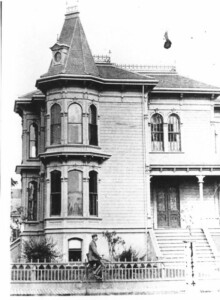
Breyman-Boise House, Salem, Oregon. Likely before 1931 move. Al Jones Collection. Willamette Heritage Center 2004.010.0149.
Built: 1884-1889
Demolished: 1972
Built as the home of Eugene Breyman on the northeast corner of Court and Church Streets, it was moved in 1931 to Summer Street (west side, between Union and D Streets and south of Mill Creek) to make way for business expansion in the area. In 1959, the property was bought by the state as part of a movement to expand the capitol mall and state government buildings.
While preservation-minded community members worked to save the building (even suggesting that it become the governor’s mansion) no way forward could be found and it was razed in 1972.
Materials Related to Breyman Boise House in WHC Collections
Manuscripts
2000.025.0006 – Specifications for Construction of House, 1884
Archives
1999.013 – David Duniway Collection. Notes, correspondence from Capitol Mall Planning Commission.
Photos
14 Images various dates
Digital Collections
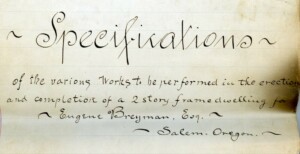
Contract for Construction of Breyman Boise House WHC Collections 200.025.0006. Cover page
Click button below to access a scan of a contract entered into by Eugene Breyman in 1884 for the construction of his house on the NE Corner of Court and Summer Streets in Salem. These extremely detailed document covers plumbing, plastering, carpentry, stone and brick masonry and more. In addition to documenting the house, it also provides some insight into how houses in the 1880s were constructed. WHC Collections 200.025.0006
Selected Transcriptions of Articles
Penk, Walt. Relocation, Restoration of Old Breyman-Boise House Sought. Oregon Statesman 5 Dec 1967 (MCHS 84-33-4-5)
Capitol planning commission Monday recommended that the Breyman-Boise house in the Capitol Mall area be considered temporary at its present location – but said it had no objection to a suitable use in the immediate future.
Located West side of North Summer Street, is between D and Union Streets. Owned by state government and the land under it will be part of the expanded mall area in the future.
The commission said it didn’t want to prejudice any plans to renovate or restore the building for historical values. Moving to another location on the mall or near the Thomas Kay museum site was suggested.
David Duniway, state archivist, spoke in favor or restoration, without the use of state funds. George McMath, Portland Architect also spoke in favor…..
Duniway pointed out that a move would not be objectionable because the building already has been moved from its original location at the corner of church and court streets.
For final Say
In the motion by Dean George Gleeson, Corvallis, the commission left leeway to the to the Board of Control on what use would be made of the building. Duniway suggested that it could be used as a museum. He noted that the town of Santa Fe, with half Salem’s population, has six museums….
Easterling, Jerry. Boise House is doomed without a buyer. Capital Journal 11 October 1971 pg 13 (WHC Collections 84-33-4-8)
The Breyman poise house on Summer street is a marked building, doomed to the wreckers’ ball in December if measures are not taken to save it.
Among Salem’s historically minded there is concern, but no money. Without money their hands are tied.
Completed in 1889 (foundation poured in 1884) for Eugene Breyman
Over the years Salem’s business district had been expanding and it needed more room. The Breyman-Boise house, which for years had been a city landmark, was located on what some businessmen considered valuable business property. As a residential area, the district was losing its appeal and in 1931-52 years after it had been built – the house was moved to its present location, where it now stands on two lots, trapped in a tangle of vines.
Until the late 1950s it remained the home of one of the Boise descendants,. Then i—in 1959 – the property was bought by the state as part of the Capitol mall expansion.
For a while the state rented the old house, but an employee of the state who is in charge of rental property, said the size of the building made it too expensive to heat.
“And after the rent no longer paid the taxes, we quite renting it,” she said. That was in 1967, since then is has been vacant.”
Because they knew what its fate was going to be, those in Salem interested in preserving objects of Salem’s history have been trying to find a way to save the old house. But thus far, their efforts have been in vain. David Duniway, archivist at the State Library , has been trying for years to interest someone in the house, one of four in Salem of “Italianate” design.
He has had several ideas, but none of them have panned out. And time is against him. In 1967, it was estimated that the house could be fixed up for about $10,000. Today that figure has jumped to about $20,000. And each year, as the house continues to deteriorate the cost goes up.
At one time he proposed that the house be used as the governor’s mansion, but that idea didn’t prove fruitful. That was his last pitch to keep the old building at its present location.
….Where it now stands there will be a parking lot some day and if it isn’t preserved, pictures in musty albums will have to tell the tale of Salem’s Breyman-Boise mansion.
“Breyman Boise House Dies.” Capital Journal 07 March 1972 pg 14 (Newspapers.com) Picture
Historic houses don’t rate obituary notices, but the Breyman-Boise house was executed Monday between sunup and sundown at the age of 88. If ever it rises again it will because of plans of two Willamette College of Law students who are preserving distinctive features for eventual reconstruction as a law office. They are Dennis Corderman and Mick Davis. The house was built on the northeast corner of Court and Church streets.



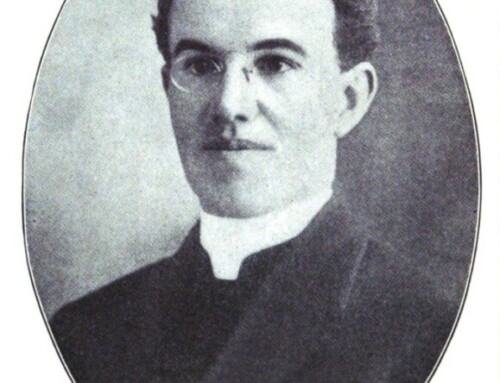
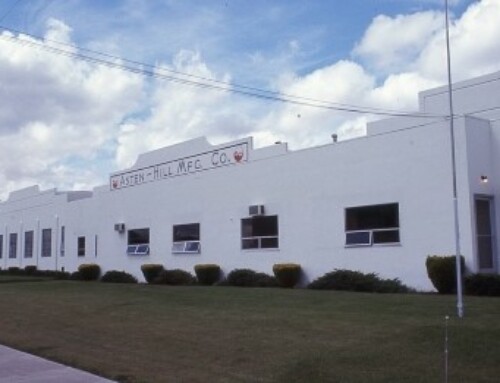
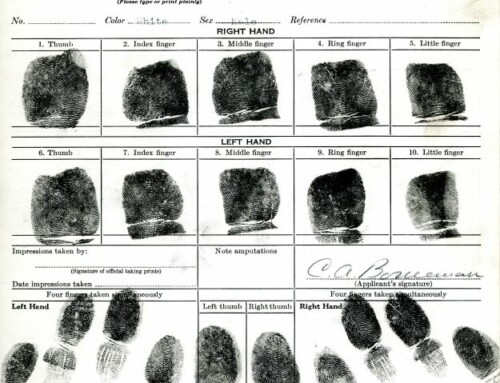
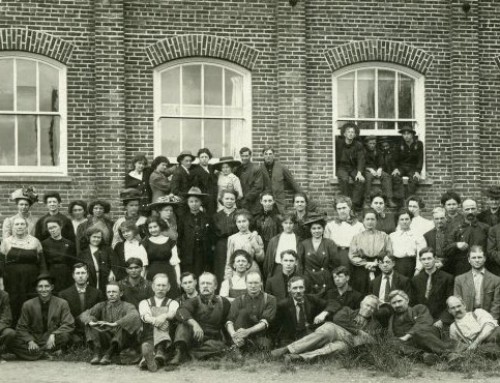
Leave A Comment